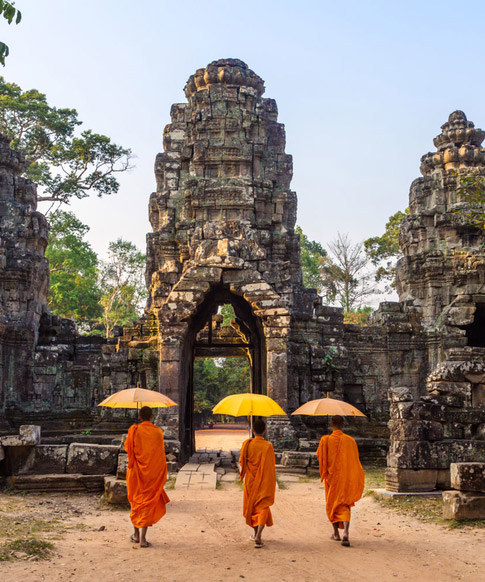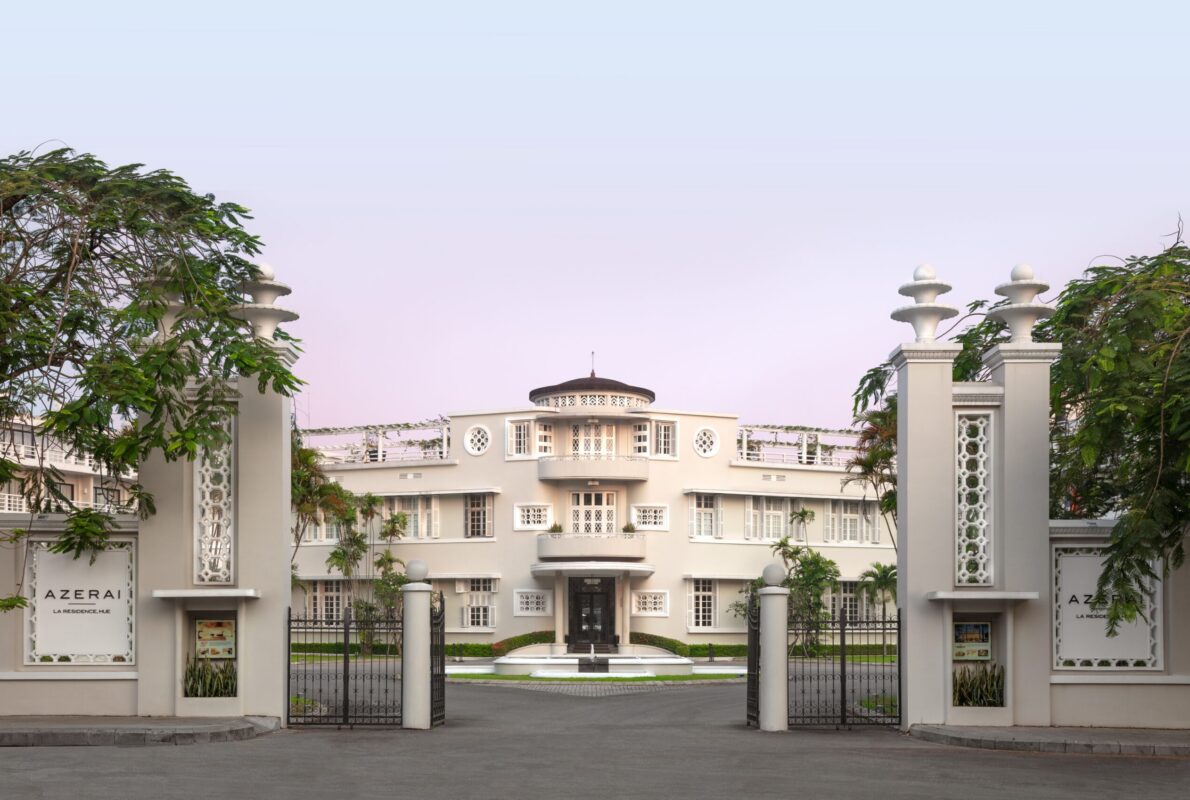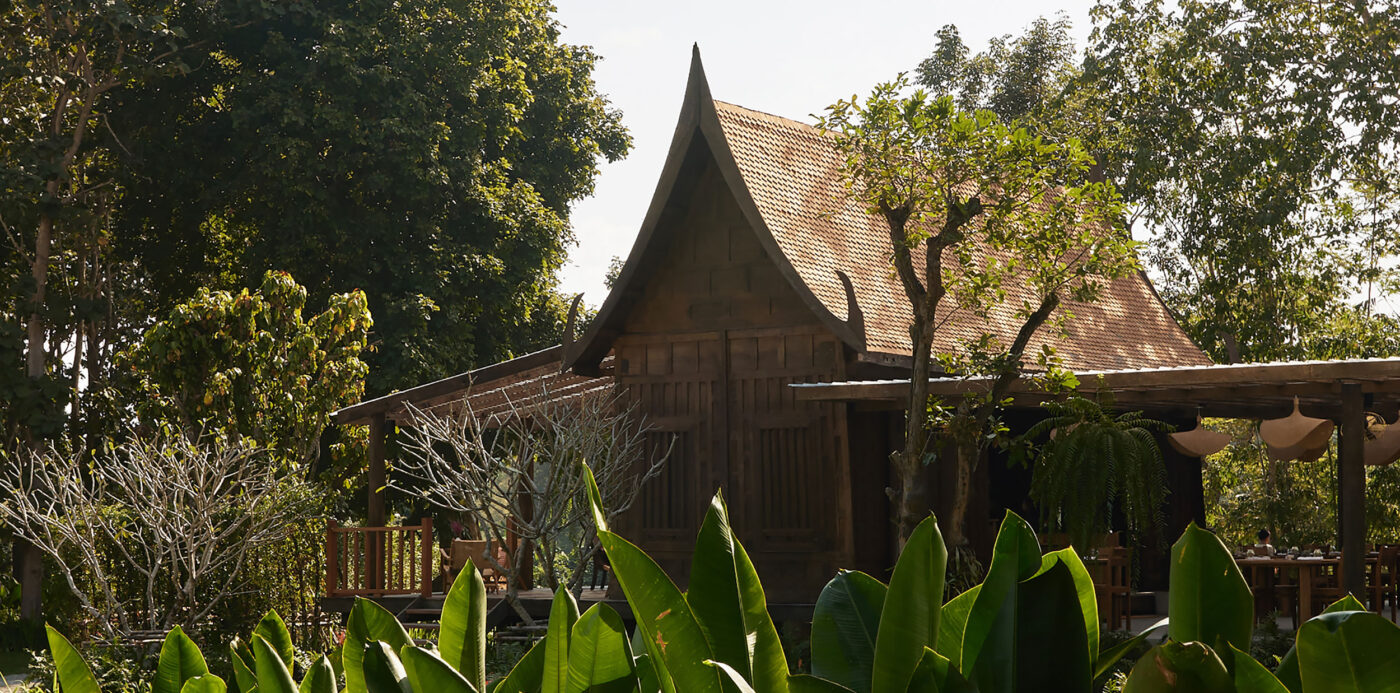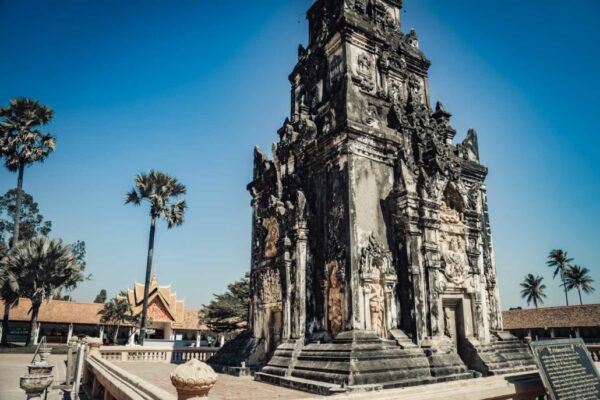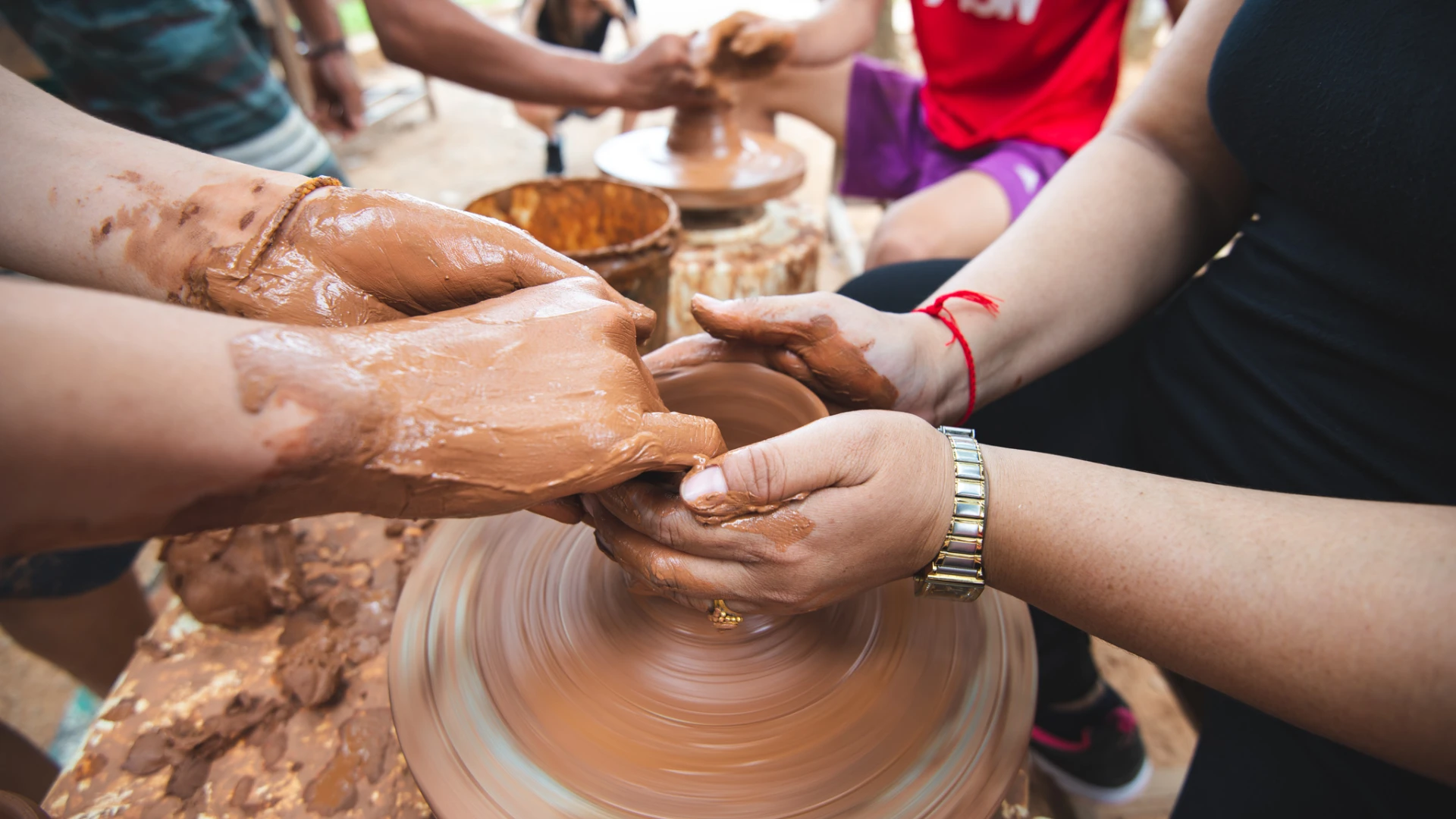Laos’ 50 ethnic groups practice a variety of traditional arts, including silk and cotton weaving, dyeing, embroidery, applique, basket weaving, carving and music.
One of the best ways to appreciate Laos’ cultural diversity is to observe these handicrafts and arts.
Silk
Women traditionally raise the silk worms on a constant diet of mulberry leaves. The silk is woven on hand looms in the north or (less commonly) on foot looms in the south.
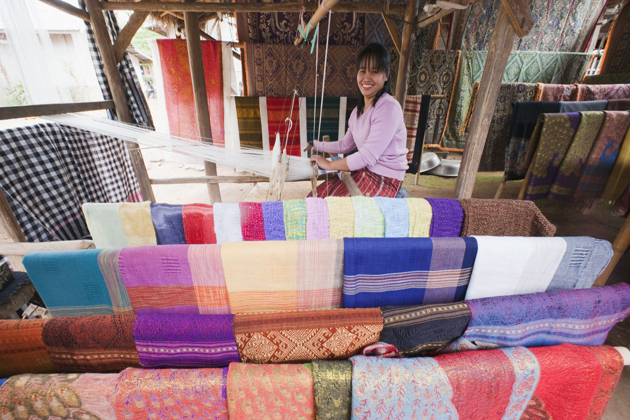
Each region and ethnic group has their own traditional weaving techniques. In the south weaving is characterized by intricate patterns of elephants, temples, khmer influenced designs and features intricate beadwork. The northeast is known for using raw silk and cotton, and tye-dying raw silk known as matmii or ikat. Central Laos runs along the Mekong River and is known for natural indigo dyes and diamond patterns which symbolize the protective scales of the mythical naga. In the former royal city of Luang Prabang embroidery using delicate gold and silver threads is also preserved.
Cotton
Cotton begins with cotton plants grown locally by Lao villagers. Cotton blooms are harvested and the white fluffy shroud is separated and stored in bamboo strip baskets, ready to be spun and turned first into long strands of fibre which can then be dyed into different colours, then woven into lengths of fabric.
These traditional designs and weaving skills are passed on from mothers to daughters.
The different ethnic groups in Laos, especially in the north of the country, provide a vast variety of patterns, colour schemes and designs. Garments like skirts will portray the wearer’s identity as well as their social and marital status.

Metal
Lao metalwork in gold and silver is experiencing a resurgence from its high point in the seventeenth century.
Silver work is especially prized and popular among ethnic minorities including the Hmong and Yao, and can be found as popular elements of traditional dress among married women.
The northern city of Luang Prabang was an important centre for silversmithing until the 1975 revolution. Although landlocked, the Kingdom of Laos was a busy thoroughfare between Burma, China, Cambodia and Thailand. Its arts show influence from all four. Silver was sourced from local silver bar-coins, French colonial coins and Chinese ingots.
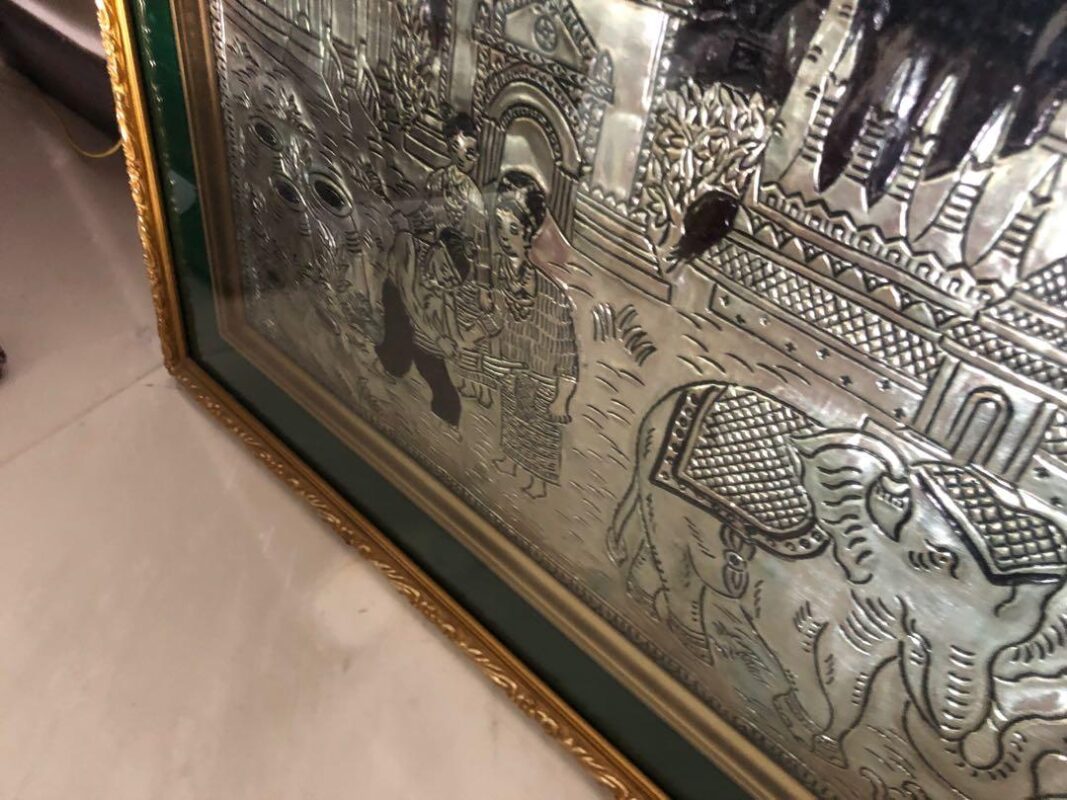
Baskets
Laos produces a number of handicrafts which use bamboo and other forms of basketry. Traditionally Lao use intricately woven bamboo mats in homes and temples, although much of the art form has been lost due to the availability and durability of plastic substitutes.
Basketry is quite common and is traditionally seen in various forms of domestic kitchen equipment, or even in the house where bamboo thatching is still commonly used.
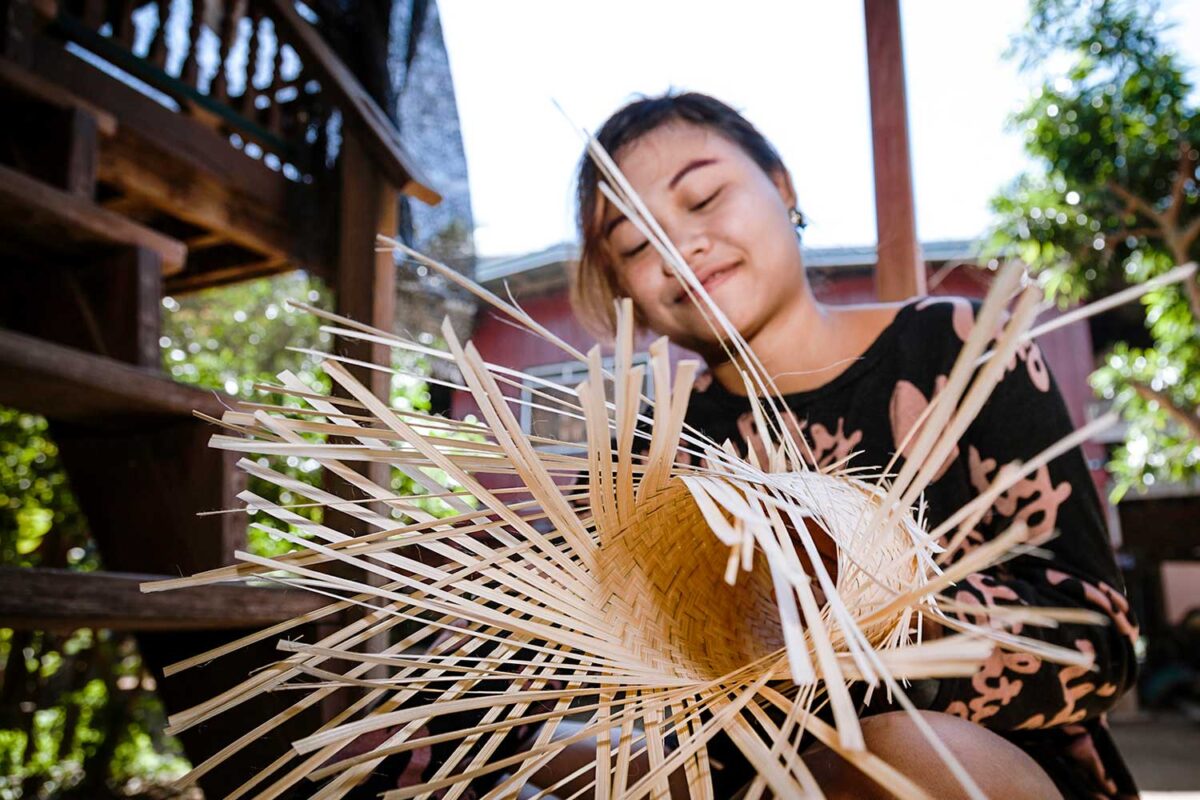
Clay
The people of Laos have been using traditional methods to make pottery from the local mud and clay for centuries.
The story goes that the first king of Laos, back in the 16th century, held a big celebration after winning a battle. He asked different villages to bring different things to the party. He requested the people of Ban Chan village, near the royal capital of Luang Prabang, to bring clay pots. Now, many, many generations later, the families of Ban Chan still carry on this tradition – pulling the clay from the earth on site and using their hands to create beautiful vessels.
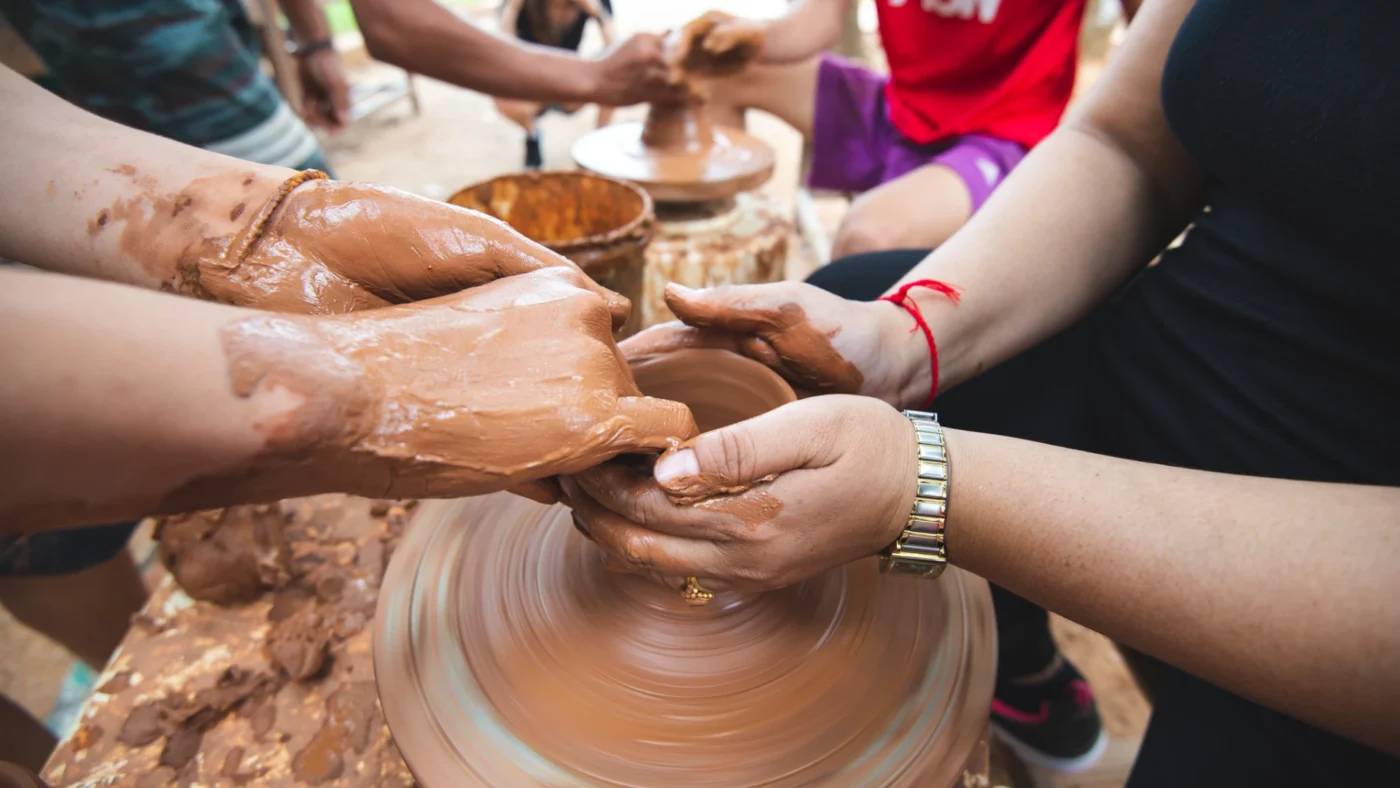
Source: https://www.tourismlaos.org/




